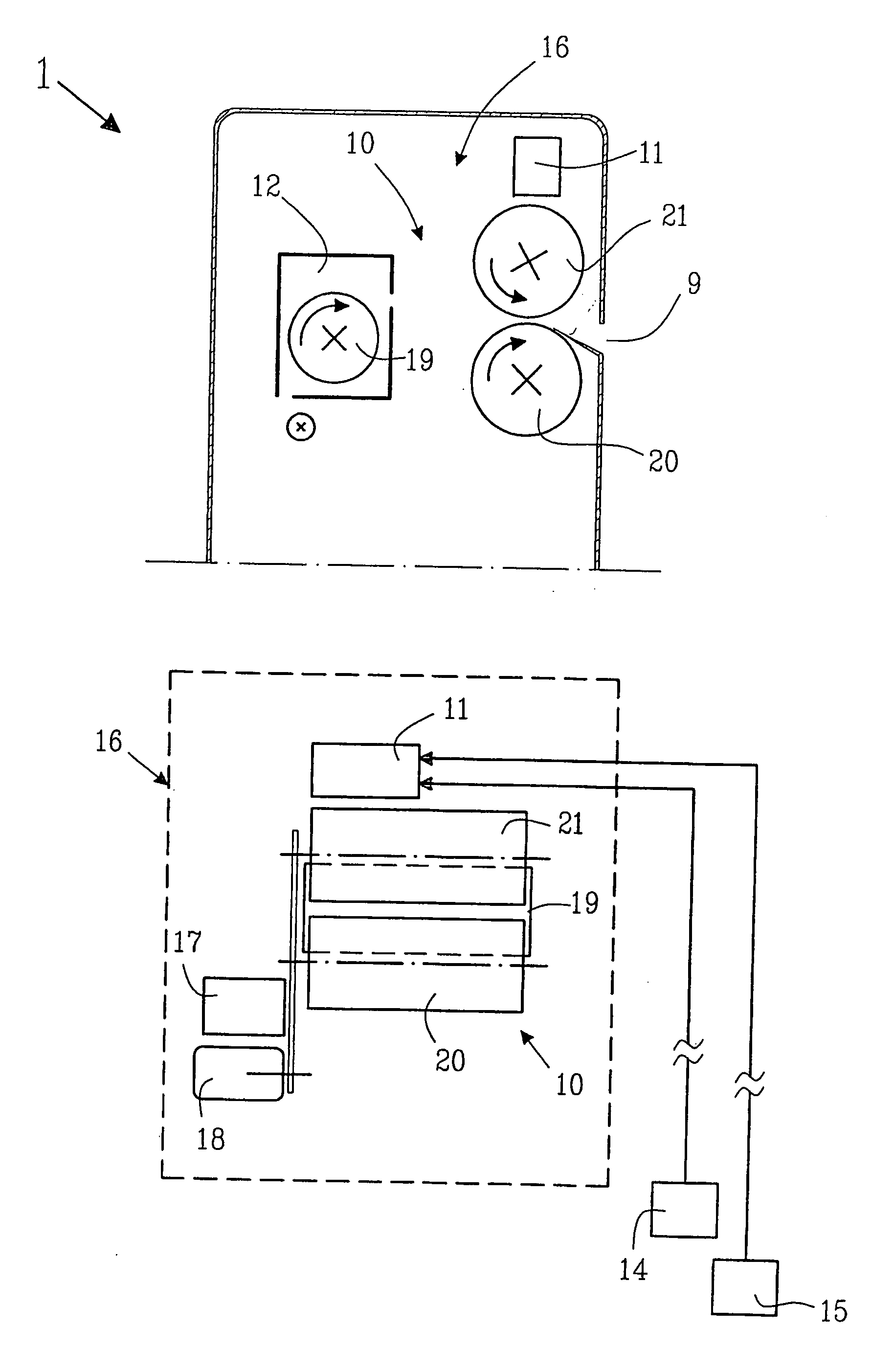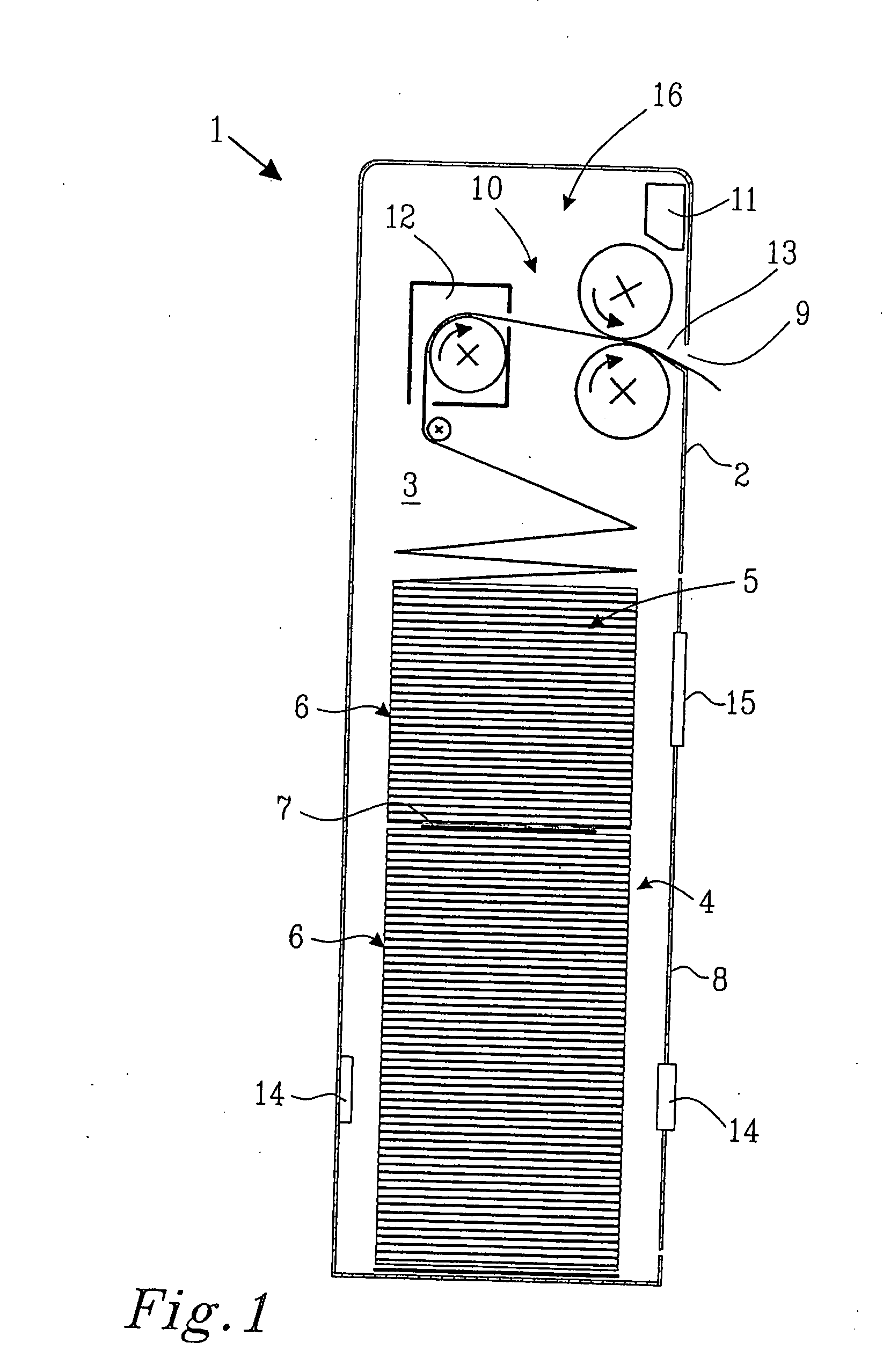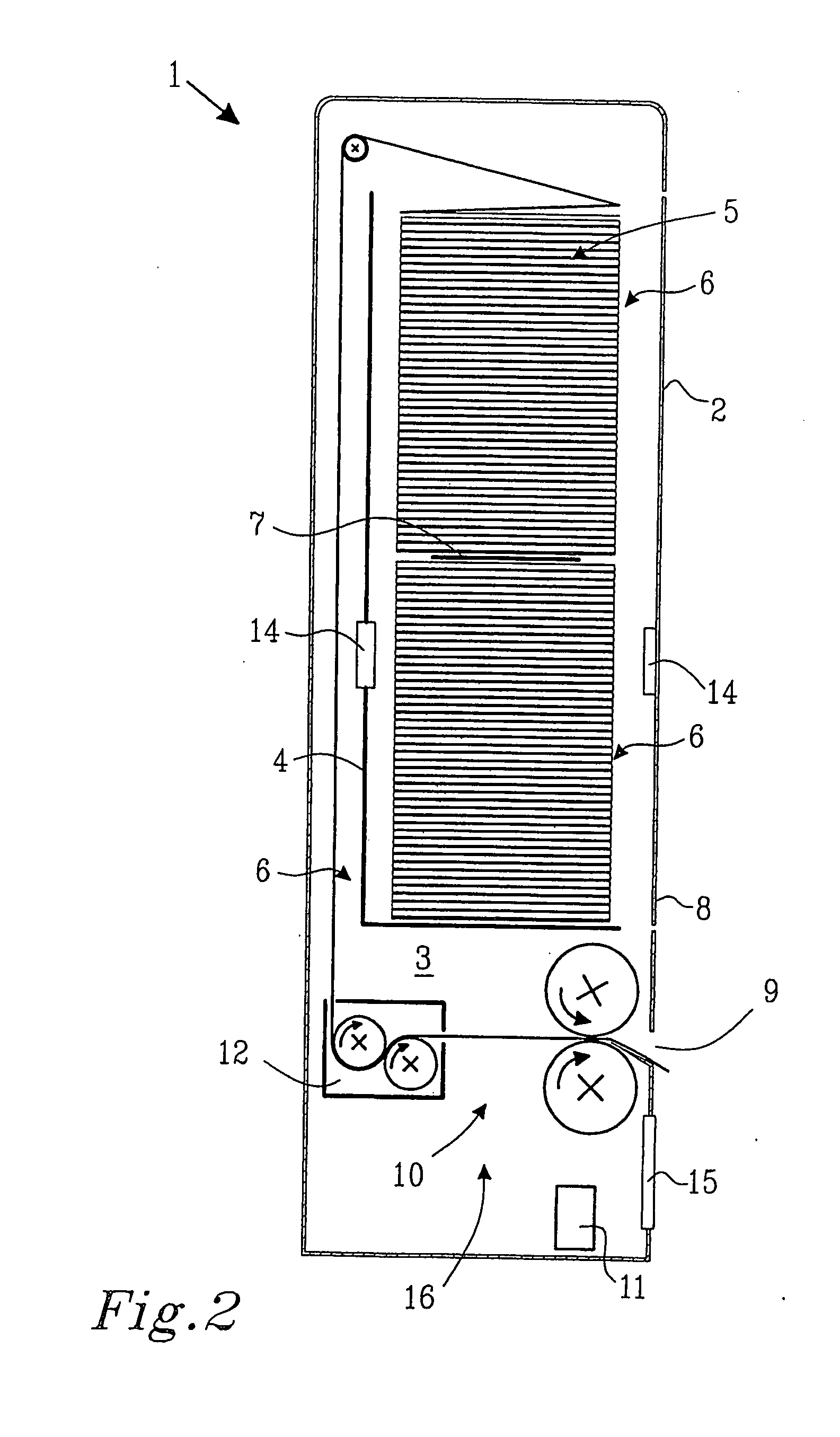Hands-free paper towel dispenser and dispensing system
a dispenser and paper towel technology, applied in the field of hands-free paper towel dispensers, can solve the problems of requiring a rather large space in the hand washing area of hands-free dispensers for rolled paper towels, low paper softness, and short battery li
- Summary
- Abstract
- Description
- Claims
- Application Information
AI Technical Summary
Benefits of technology
Problems solved by technology
Method used
Image
Examples
Embodiment Construction
[0025] The term hands-free dispenser means that the dispenser is an electronical automatic touch free dispenser. A touch free dispenser is usually an electronical dispenser that will leave a part of the web of towels either close to the dispensing opening or outside the dispenser ready to be used by the users. An automatic touch free dispenser, such as a hands-free dispenser, have some sort of automatically fed towels, i.e. without touching the dispenser the user can get the feeding forward of a towel from the hands-free paper towel dispenser that is electronically motor driven. The paper towels can be fed automatically in different ways. The user can then grab the towel and pull or tear of the given amount of paper.
[0026] The term hands-free position is when the web of towels has been fed forward and automatically dispensed by the feeding mechanisms and the web of towels is thus now sticking out through the dispensing opening and ready to be pulled, teared or cut by the user. Ther...
PUM
| Property | Measurement | Unit |
|---|---|---|
| Length | aaaaa | aaaaa |
| Length | aaaaa | aaaaa |
| Width | aaaaa | aaaaa |
Abstract
Description
Claims
Application Information
 Login to View More
Login to View More - R&D
- Intellectual Property
- Life Sciences
- Materials
- Tech Scout
- Unparalleled Data Quality
- Higher Quality Content
- 60% Fewer Hallucinations
Browse by: Latest US Patents, China's latest patents, Technical Efficacy Thesaurus, Application Domain, Technology Topic, Popular Technical Reports.
© 2025 PatSnap. All rights reserved.Legal|Privacy policy|Modern Slavery Act Transparency Statement|Sitemap|About US| Contact US: help@patsnap.com



